
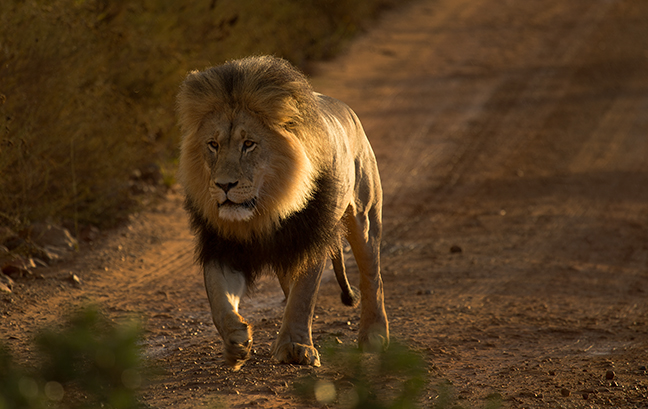
A male lion walks down the road in the Gondwana Private Game Reserve in South Africa. When hungry, a lion may travel up to 15 miles in one day looking for food. They need to hunt and eat every three to four days and can eat 75 pounds of meat per meal.
©Rich Beckman
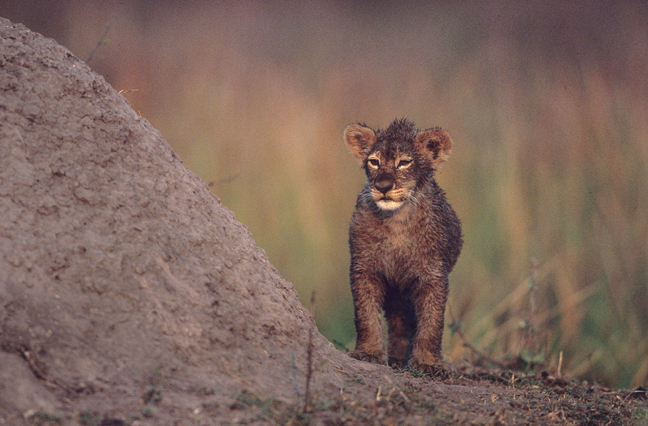
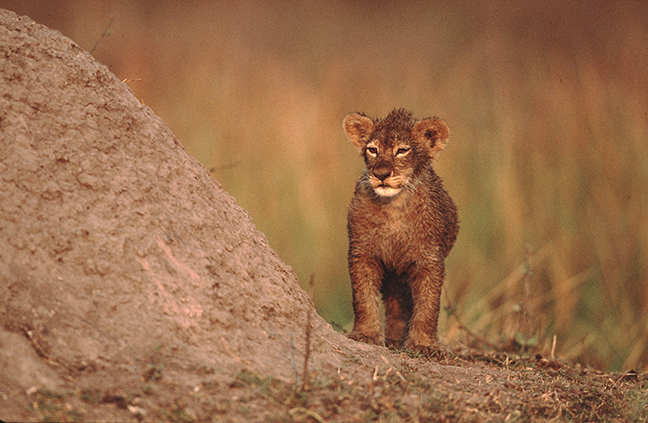
A muddy lion cub watches his siblings beside a termite mound in the Masai Mara. Females typically have litters of two or three cubs that are weaned by the age of nine months. Cubs are extremely playful with both their littermates, other cubs and adults within their pride.
©Rich Beckman
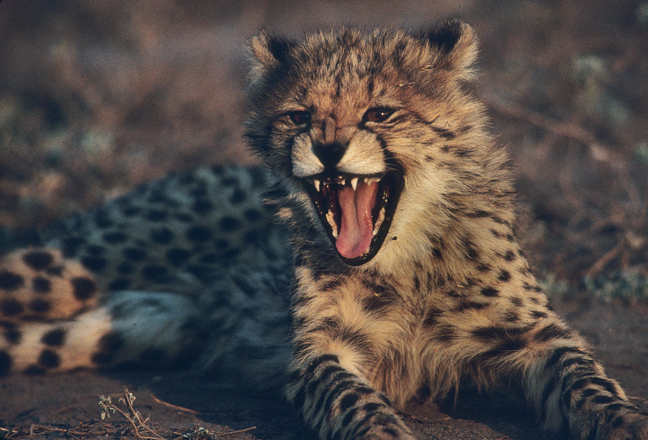
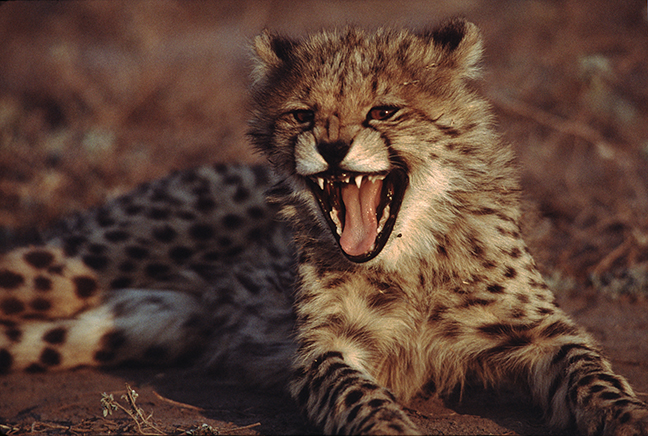
A cheetah cub rests in the Masai Mara as his mother hunts. Cheetah cubs nurse for about three months but begin supplementing their diet with meat before they are a month old. When they are about six weeks old, they begin to accompany their mother when she hunts.
©Rich Beckman
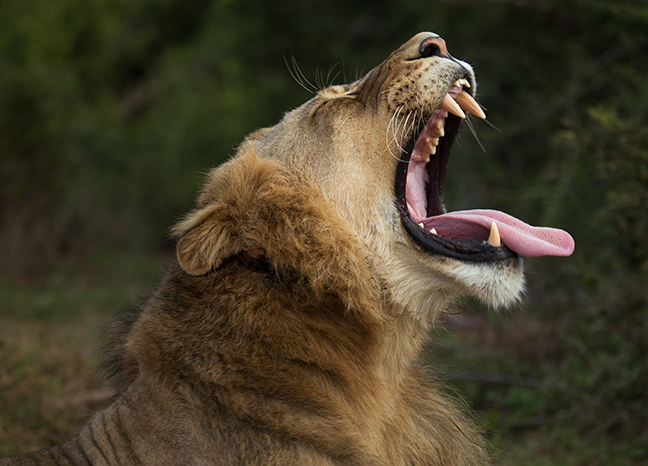

A young male lion lies along the Harvey Loop in Addo Elephant National Park. Six Lions from the Kalahari were released in the Addo Elephant National Park in 2003, where they used to roam freely until being hunted to extinction. There are now nine adult lions in the Park and all of the females are currently on birth control to prevent any increase in the population.
©Rich Beckman

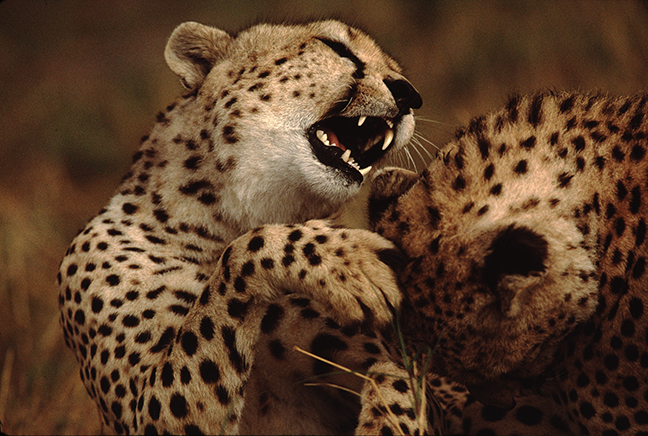
Two yearling cheetah cubs play fight in the Serengeti. Cubs stay with their mother for the first 18 months to two years of their lives. There are more than 1,500 cheetah living in Serengeti National Park, a World Heritage Site in Tanzania. The Serengeti Cheetah Project, initiated in 1974, was one of the first and is still one of the most significant cheetah research projects in the world.
©Rich Beckman
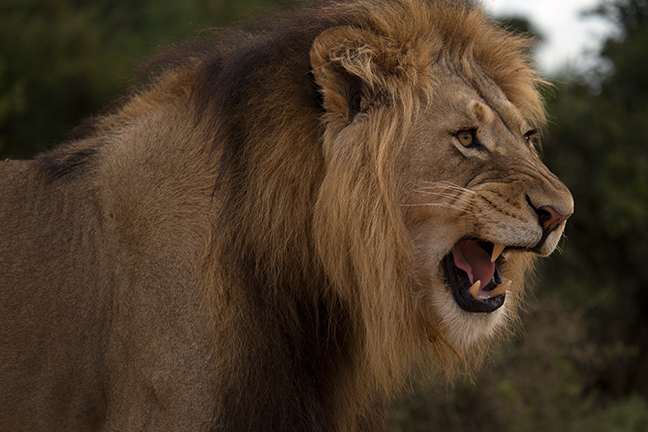

A male lion snarls as dusk settles over the Langeberg and Outeniqua Mountains in the Western Cape of South Africa. Males defend the pride's territory, which may include up to 100 square miles. They mark their borders with urine and vocalize intimidatingly to warn and fend off intruders.
©Rich Beckman
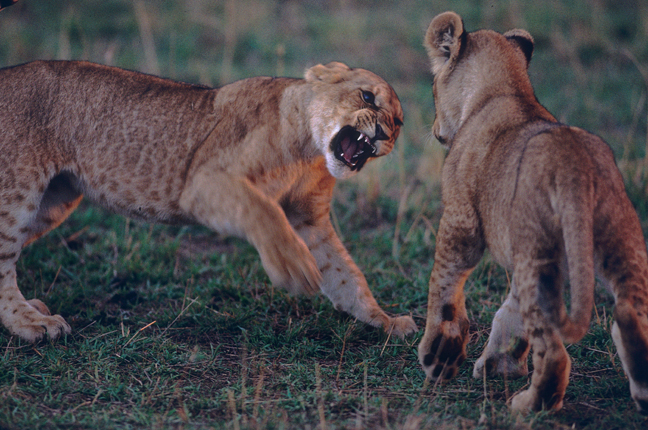

Lion cubs play in the Selous. Cubs are born with brown spots on wooly coats that they retain for about five months. Less than half of cubs survive to be a year old and four out of five die from animal attacks or starvation by the time they are two.
©Rich Beckman
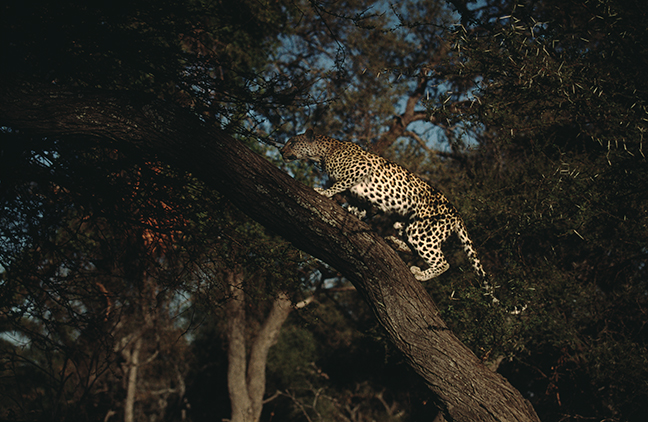

A leopard climbs a tree on Chief's Island in the Okavango Delta. Their ability to climb provides safety from predators. Leopards are solitary and largely nocturnal. They are opportunistic hunters with a broad diet. They primarily feed on ungulates and primates, but also will eat rodents, reptiles, insects and birds.
©Rich Beckman
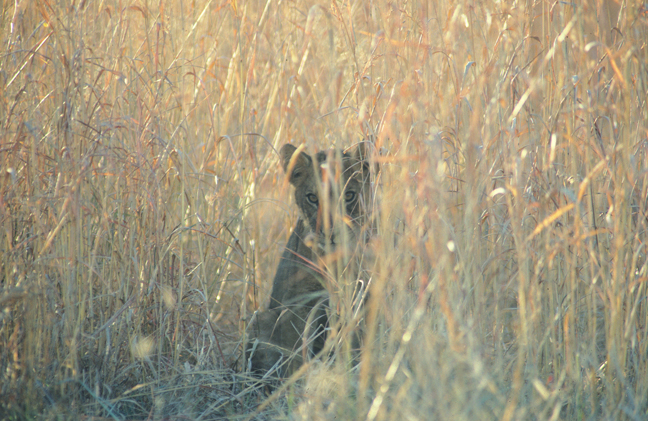

A young lion cub hides in the tall grass in the Masai Mara. The Mara has come to symbolize everything that is wrong with wildlife safari tourism. In the past 30 years wildlife populations have crashed by up to 70 percent, according to a Journal of Zoology study, while cows grazing illegally inside the reserve were up 1,100 percent. Every sighting draws 30 or more minivans now that drivers announce sightings on their radios.
©Rich Beckman
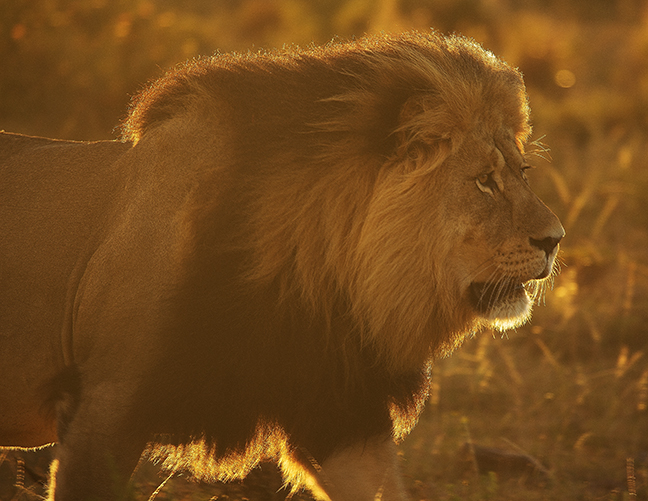

A male lion searches for his pride at sunrise in the Gondwana Private Reserve. Gondwana is situated within the Cape Floristic Kingdom. It is the smallest Floral Kingdom in the world yet the most diverse in terms of plant species and is endemic to South Africa.
©Rich Beckman

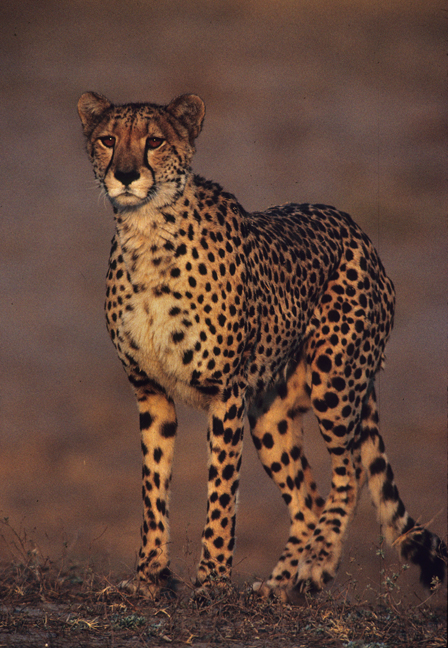
A Cheetah stalks a hare at sunrise in the Masai Mara National Reserve in Narok County, Kenya. The cheetah is the fastest land animal, able to reach speeds of 75 miles per hour.
©Rich Beckman
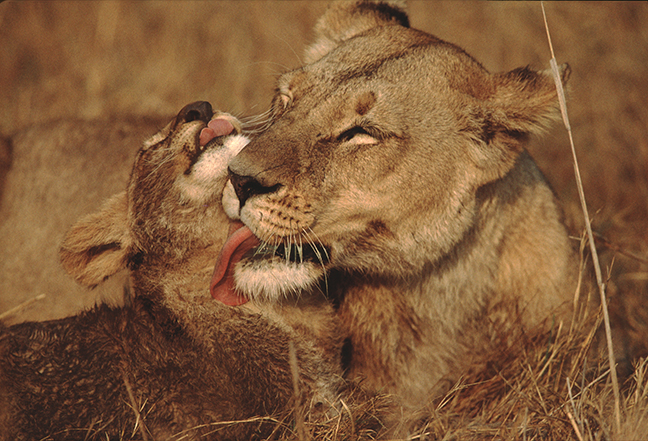

A lioness cleans her muddy cub in the Masai Mara National Reserve in Kenya. Cubs stay with their mothers for up to three years. Most female cubs join their mother's pride, whereas young males always leave the pride in search of unrelated potential mates.
©Rich Beckman
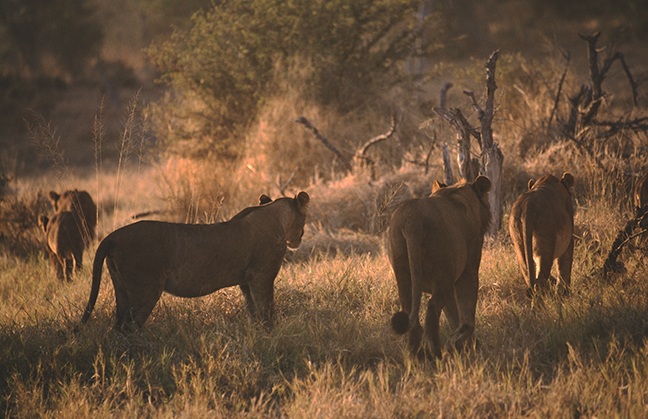

A group of lionesses heads out for an evening hunt along the Savuti Channel. Hunting often involves a standard formation with some lionesses circling behind the intended prey while others lay hidden in the grass waiting for the prey to be driven toward their hiding place.
©Rich Beckman
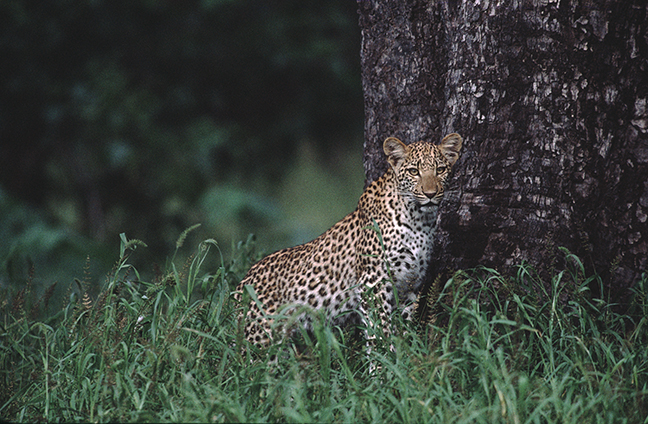

A sub-adult leopard looks for small prey in the Moremi Game Reserve in the Okavango Delta. By the age of two, cubs are independent of their mothers and must find their own prey while avoiding dominant males in new territories. Leopards are solitary and do not live in family groups.
©Rich Beckman
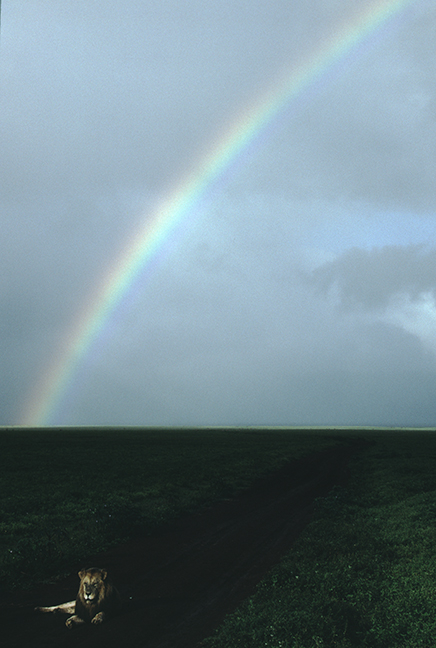

A male lion rests on the road under a rainbow during a rainy afternoon in the Ngorongoro Crater in the Arusha Region of Tanzania.
©Rich Beckman
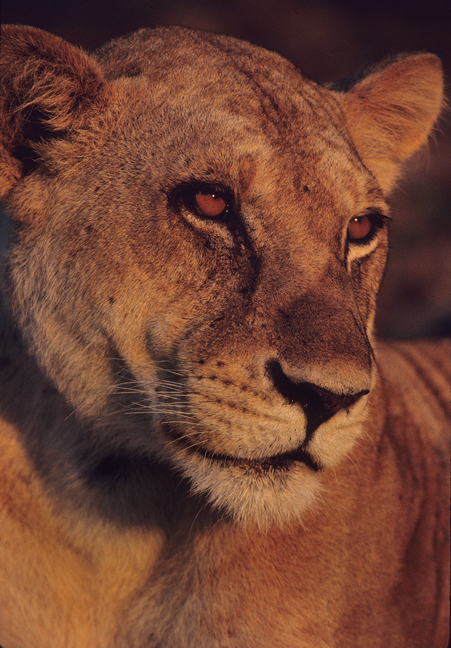

A lioness in the Selous Game Reserve, Africa's largest game reserve, watches her cubs play. There are numerous lionesses in a typical pride and they are all usually related.
©Rich Beckman
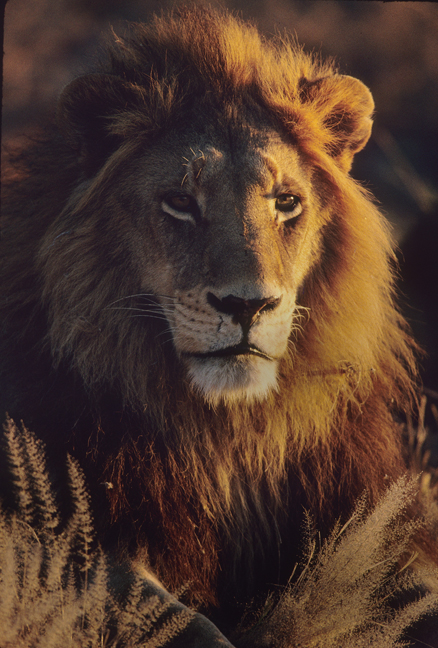

A male lion at sunset in the Selinda Reserve, an area on the western edge of Chobe National Park that borders Linyanti to the East and the Kwando Reserve to the north in Botswana.
©Rich Beckman
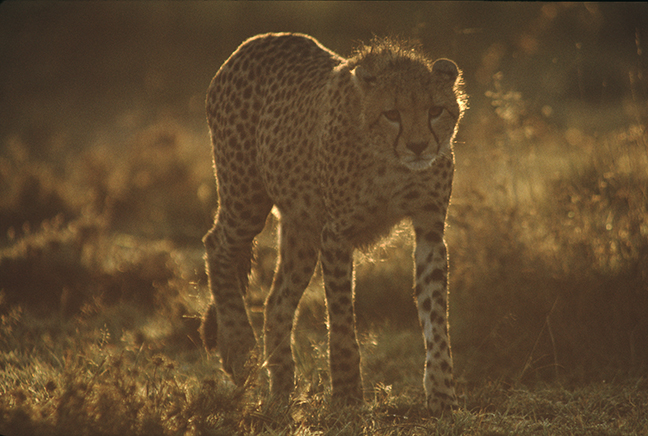

A female cheetah at sunrise in the Masai Mara scans the grasslands looking for prey. Females typically have a litter of three cubs who stay with them for up to two years learning to hunt. They require wide-open grasslands and are under pressure from increased human settlement.
©Rich Beckman
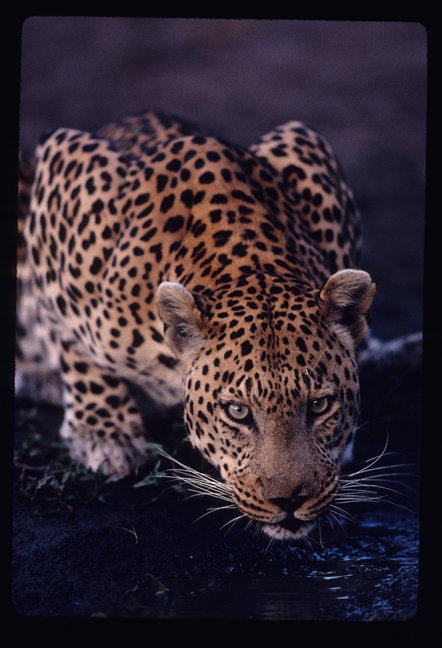
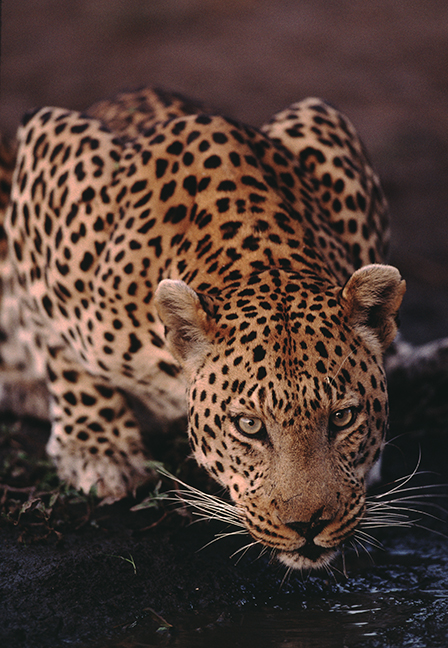
A leopard drinks from a puddle following an afternoon shower on Chief's Island in the Moremi Game Reserve in the Okavango Delta in Botswana. Leopards are nocturnal and solitary.
©Rich Beckman
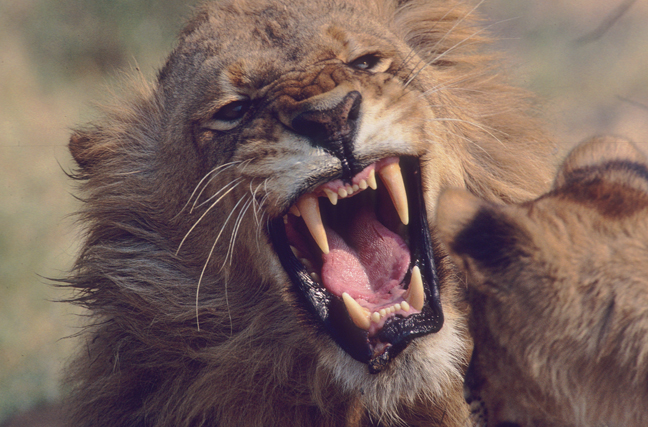

A male lion on Chief's Island in the Moremi Game Reserve reacts to being awoken by one of his cubs. Cubs face high mortality, especially males. When they begin to reach sexual maturity around age two, the older males within the pride drive them out and they have to find a new territory or take over another pride.
©Rich Beckman
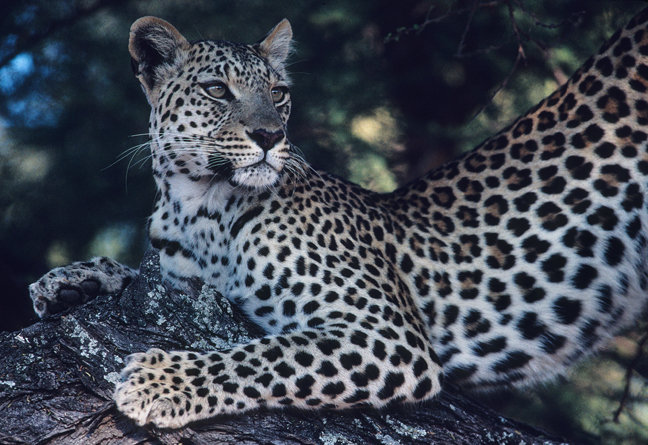

A leopard rests in a tree on Chief's Island in the Moremi Game Reserve. Leopards are nocturnal and often rest in trees during the day. After hunting, they often drag their prey onto tree branches to protect it from other predators and scavengers.
©Rich Beckman